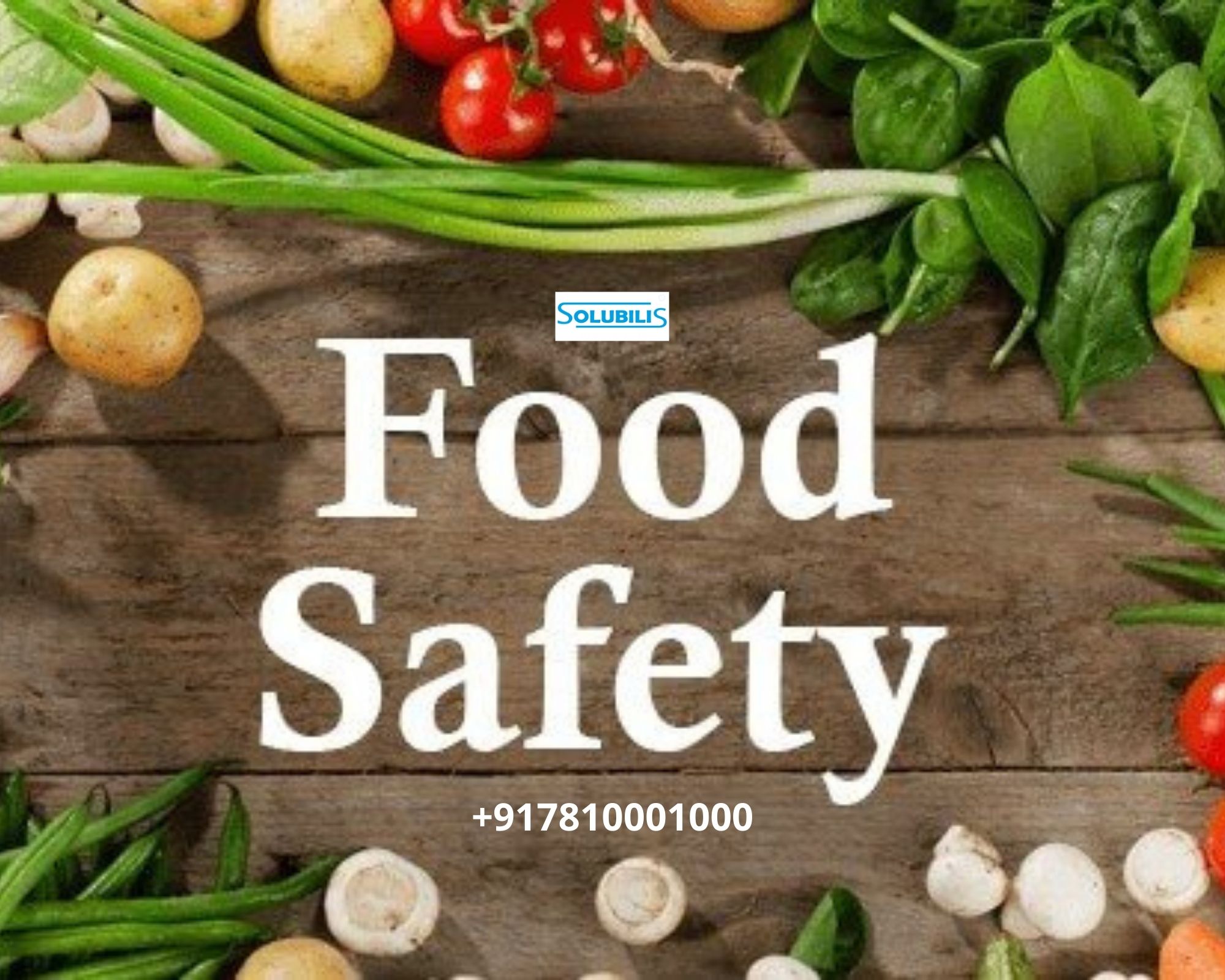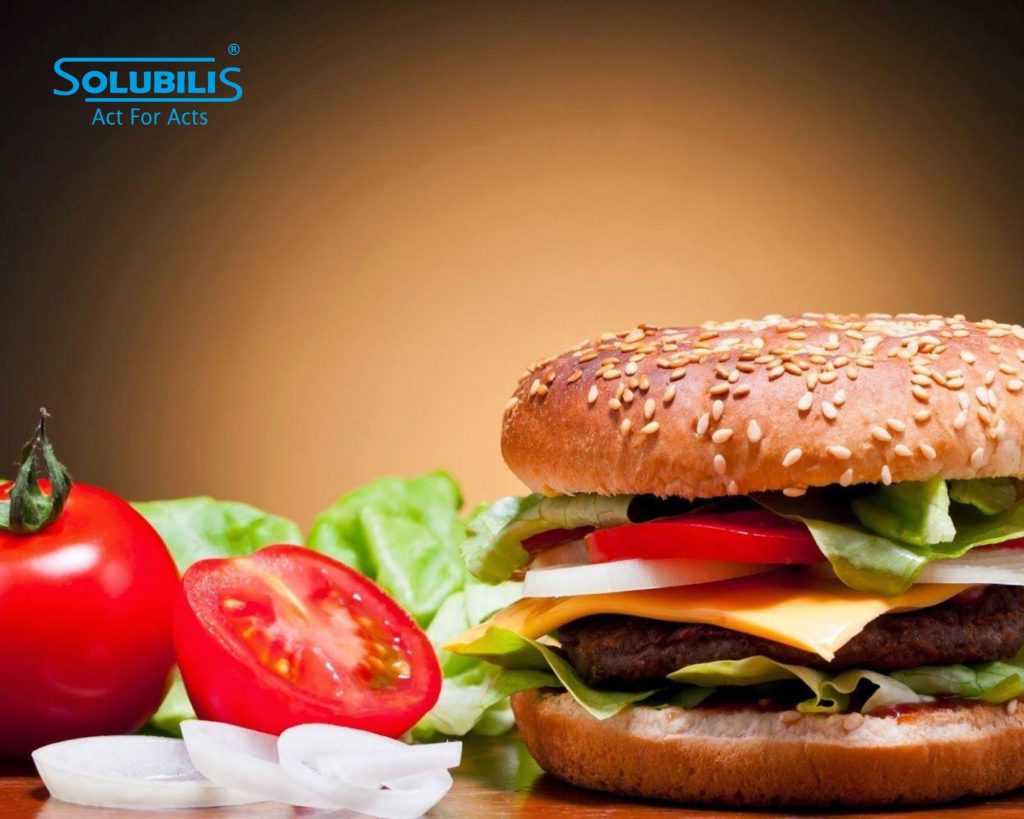Steps taken for food safety

TALK TO EXPERTS
Food safety alludes to schedules in the arrangement, taking care of and capacity of food intended to forestall foodborne ailment and injury. From homestead to plant to fork, food items might experience quite a few wellbeing dangers during their excursion through the store network. Safe food taking care of practices and techniques are in this way carried out at each phase of the food creation life cycle to control these dangers and forestall mischief to shoppers.
As a logical discipline, food safety draws from a wide scope of scholastic fields, including science, microbial science and designing. These different ways of thinking unite to guarantee that food safety security is done any place food items are sourced, made, ready, put away, or sold. In this sense, food safety is a fundamental way to deal with cleanliness and responsibility that concerns each part of the worldwide food industry.
The accompanying blog characterizes food safety in assembling and clarifies the significance of sanitation for the worldwide natural pecking order. Following a concise outline of the distinctive administrative bodies entrusted with assessing sanitation all throughout the planet, the article traces the vital standards of powerful food safety guideline, the historical backdrop of food safety and the outcomes of risky food taking care of practices and methodology for organizations and customers.
Steps for food safety
There are many variables which food safety organizations need to think about while guaranteeing food safety for shoppers. Sticking to the fundamental sanitation guidelines and guidelines can assist with forestalling episodes of food-borne sicknesses like Salmonella, E. coli and Campylobacter. They are now given in each following steps given below.
Clean: Wash your hands and surfaces regularly.
Microorganisms that cause food contamination can get by in many places and spread around your kitchen.
Wash hands for 20 seconds with cleanser and water previously, during, and in the wake of getting ready food and prior to eating.
Wash your utensils, cutting sheets, and ledges with hot, foamy water.
Wash the products that are new and of the soil under running water.
Isolated: Don’t cross-debase.
Crude meat, poultry, fish, and eggs can spread microbes to prepared to-eat food varieties—except if you keep them isolated.
Utilize separate cutting sheets and plates for crude meat, poultry, and fish.
At the point when shopping for food, keep crude meat, poultry, fish, and their juices from different food varieties.
Keep crude meat, poultry, fish, and eggs separate from any remaining food sources in the cooler.
Cook to the right temperature.
Food is securely cooked when the interior temperature gets sufficiently high to kill microbes that can make you wiped out. The best way to let know if food is securely cooked is to utilize a food thermometer. You can’t determine whether food is securely cooked by really taking a look at its tone and surface.
Utilize a food thermometer to guarantee food varieties are cooked to a safe inward temperature. Actually take a look at this outline for a nitty gritty rundown of temperatures and foods external symbol, including shellfish and precooked ham.
Entire cuts of hamburger, veal, sheep, and pork, including new ham (crude): 145°F (then, at that point, permit the meat to rest for 3 minutes prior to cutting or eating)
Fish with balances: 145°F or cook until tissue is dark
Ground meats, like hamburger and pork: 160°F
All poultry, which includes ground chicken and turkey: 165°F
Extras and meals: 165°F
Chill: Refrigerate expeditiously.
Microbes can increase quickly whenever left at room temperature or in the “Peril Zone” somewhere in the range of 40°F and 140°F. Never forget about transitory nourishment for over 2 hours (or 1 hour whenever presented to temperatures above 90°F).
Keep your fridge at 40°F or underneath and realize when to toss food out external symbol.
Refrigerate transient food inside 2 hours. If the food is presented to temperatures above 90°F (like a hot vehicle or cookout), refrigerate it inside 60 minutes.
Defrost frozen food securely in the fridge, in cool water, or in the microwave. Never defrost food sources on the counter since microorganisms duplicate rapidly in the pieces of the food that arrive at room temperature.

Who enforces food safety standards?
While the worldwide administrative bodies recorded above give direction, confirmation and examining administrations for worldwide food producers, they are not liable for the dynamic authorization of sanitation laws.
Each country characterizes and builds up its own laws and authorization rehearses for sanitation guideline and these guidelines might change from one country to another, and locally from one area to another. Carrying a food item to an unfamiliar market requires consistence with the sanitation and shopper security laws of that country and its local legislative specialists.
As a rule, worldwide food safety guidelines are intended to work with consistence with food safety laws in significant business sectors, improving on the most common way of getting endorsement from unfamiliar legislative controllers.
History of food safety
Foodborne ailment has undermined human wellbeing since forever ago. Truth be told, numerous food readiness techniques we actually use today, like cooking, canning, smoking and maturation, can be perceived as crude sanitation measures, created as a method for holding individuals back from becoming ill.
Today, we advantage from hundreds of years of logical and innovative advancement that have made a wealth of safe food and drink items something that a significant number of us underestimate. However, the idea of food safety as far as we might be concerned today, and the meticulousness with which it is implemented, is a generally new improvement in mankind’s set of experiences that is personally attached to changes in the manner we live and eat.
In 1905, American creator Upton Sinclair distributed his original The Jungle, which highlighted terrible portrayals of Chicago’s meatpacking industry. The following public shock drove the U.S. government to pass the Meat Inspection Act the next year, building up the primary clean principles for butchering and butchering. This law denoted whenever that food first safety offices were dependent upon ordinary reviews and investigations by legislative specialists and a portion of the absolute first laws for sanitation in assembling.
Across Europe and North America, the modern upset introduced the foundation of numerous administrative bodies and central laws concerning sanitation and review. As food creation turned out to be progressively motorized and benefit motivating forces climbed, laws were passed to forestall the deliberate offer of food items that were misbranded, debased, or in any case altered. It was during this time that fixings and added substances became subject to guideline.
Soon after World War II, electric fridges entered working class homes across Europe and North America, changing the way that regular individuals bought and put away food. The period of home refrigeration started the quick development of modern food creation, just as a developing requirement for stricter food guidelines. It was in this changing food scene that Mars Incorporated turned into the main significant food producer to introduce metal identifiers in their offices in 1947.
The shift from receptive to proactive sanitation standards started when HACCP was brought into the world in 1959. Perceiving that testing completed items was not a successful method for guaranteeing food quality and wellbeing, researchers at NASA worked together with the Pillsbury Company, an American producer of prepared merchandise and baking blends, to make a danger based framework that distinguished “basic disappointment regions” underway that presented safety chances. With Pillsbury driving the way, this arrangement of danger examination and control was taken on by various driving food producers in the United States.
By the mid-1980s, researchers all throughout the planet concurred that the proactive idea of HACCP gave a more successful method for controlling for sanitation perils than conventional assessment techniques. The next many years saw the foundation of worldwide administrative bodies and outsider review firms intended to execute and authorize protection consistence in an undeniably globalized food industry. It is upon this preparation that advanced food safety guidelines and practices are fabricated.
Latest news on FSSAI
FSSAI has marked a MoU with food safety service to help miniature level MoU with food safety service to help miniature level food business people and Farmer Producer Organizations (FPOs). The MoU, endorsed on Friday, likewise plans to help Self Help Groups (SHGs) and makers cooperatives to work on the norm of their food organizations.
“As a feature of Aatmanirbhar Bharat Abhiyaan, this progression will help in causing miniature undertakings to work on the nature of their food items and become competitive, “Food Safety and Standards Authority of India (FSSAI) said in an assertion
There will be two spaces of coordinated effort among FSSAI and Ministry of Food Safety Industries – sanitation preparing and enlistment of miniature ventures. Food controllers of miniature level food safety units will be given preparing on comprehension of good cleanliness, food testing process and other administrative requirements. On fruitful consummation of preparing, the food overseers will be given ‘Sanitation Supervisor’ testament by FSSAI. FSSAI and the service would offer help to miniature undertakings towards getting FSSAI permit and enrollment.
